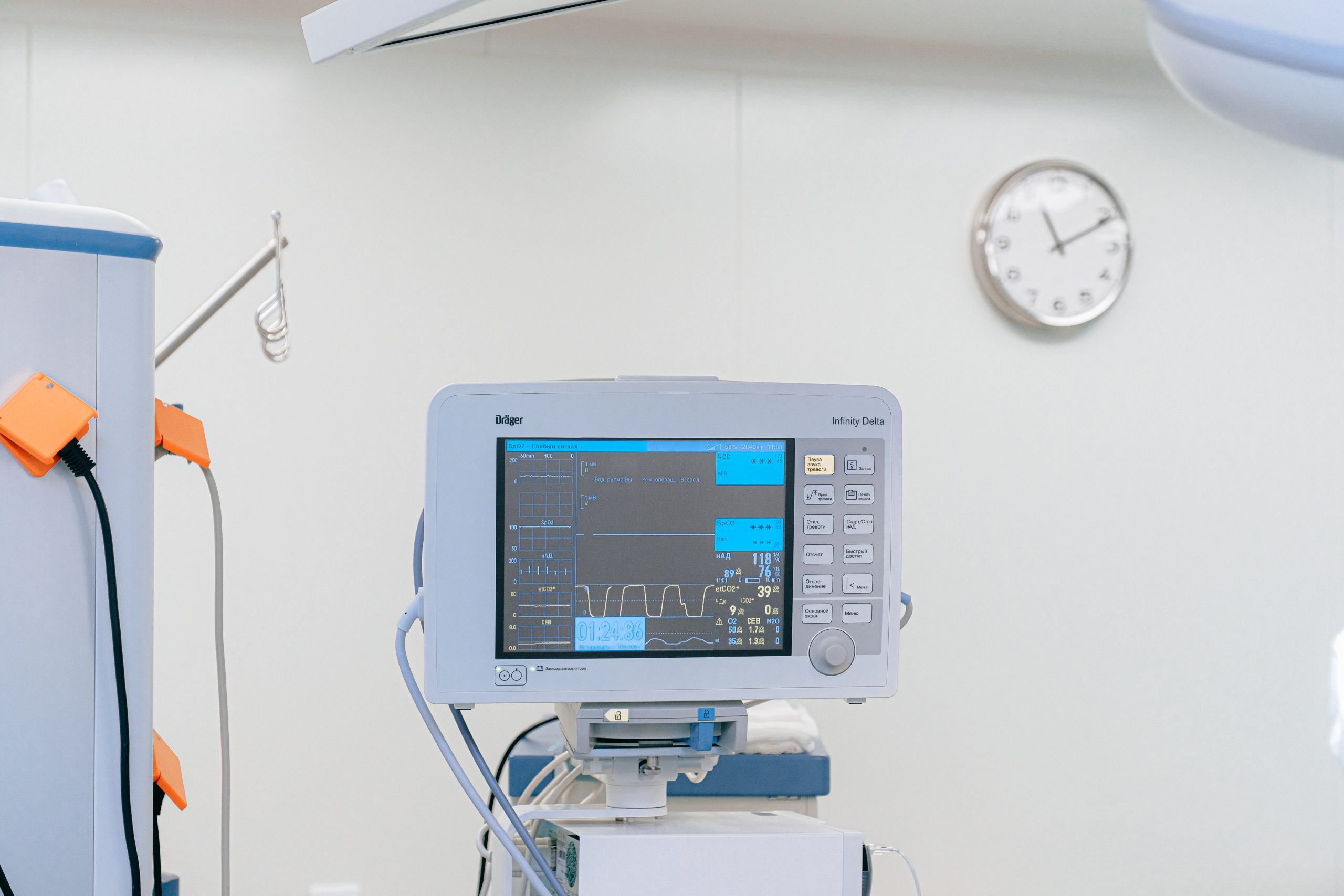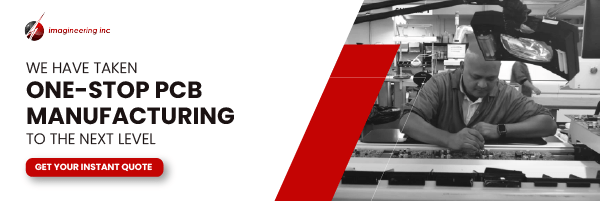Printed circuit boards (PCBs) are a mainstay in the medical industry. Due to their compact design, flexibility, and reliable components, medical printed circuit boards are the industry standard for a wide variety of electronic medical devices.
Because medical PCBs are used in high-stakes settings, it’s imperative that they adhere to global safety standards for materials, function, and longevity. Manufacturers using medical PCBs need to be familiar with regulatory standards and quality assurance procedures. Here are six requirements you need to know when using printed circuit boards in medical equipment.
What are Medical PCBs Used For?
Like many areas of the tech-industry, medical equipment has become increasingly accessible, affordable, and user-friendly in recent years. PCBs are a vital component of numerous life-saving devices used by both patients and doctors on a day-to-day basis. Due to their heat-resistant design, PCBs are an excellent option for electronics that need to be kept close to the patient’s body.
Medical PCBs are used in many devices including:
- Blood pressure monitors.
- Pacemakers.
- Thermometers.
- Cochlear implants.
- Neurostimulators.
- Handheld monitors.
#1: Manufacturing Requirements
Design and Function
Because medical printed circuit boards are used in a variety of devices that need to conform to non-standard sizes, it’s popular to use flex and rigid flex circuit boards across the medical industry. These boards are made using flexible, lighter-weight materials that are easier to fit into small spaces, making them ideal for custom medical devices. Flexible boards feature highly complex components condensed into a small space for optimal device functionality without compromising on quality.
Technology
Printed circuit boards are generally manufactured with either surface mount technology (SMT), or plated-through-hole technology (PTH). In general, SMT boards are more widely used since they are easier to install in small spaces and offer high-quality results. Additionally, SMTs cut down the costs required for assembly since technicians don’t need to drill holes in the board.
Materials
The materials used in medical device manufacturing are highly regulated, ensuring that each device meets safety requirements. Printed circuit boards need to be RoHS (Restriction of Hazardous Materials) compliant, and the particular materials used often depend on factors like heat resistance and connectivity capabilities. Since it’s so imperative for medical PCBs to be safe for internal use, they are usually coated with a FR-4, polyamide, Teflon, or ceramic material as a heat deterrent. These coatings help divert heat and prevent devices from being damaged.
#2: Compliance Requirements
There are several different global and national organizations that monitor medical PCBs to ensure standardization and safety during fabrication. Here is a brief overview of several primary organizations that monitor medical circuit boards.
IPC Regulations
The IPC regulates the assembly of a wide range of electronic equipment including medical PCBs. PCB standards include:
- IPC-A-600: outlines acceptable circuit board conditions.
- IPC-A-6012: outlines performance and qualifications for rigid PCBs.
- IPC-A-610: outlines acceptability of electronic assemblies.
ISO Regulations
The International Organization for Standardization (ISO) is another governing body that regulates the design and manufacture of PCBs. In addition to requirements for design and manufacture, the ISO provides guidelines for a detailed quality management system.
- ISO 9000: outlines quality requirements for PCB design and assembly.
- ISO 13485:2016: is the updated quality management system (QMS) for PCB manufacturers.
FDA Regulations
The Food and Drug Administration (FDA) is one of the primary governing bodies regarding medical devices in the United States. The center for devices and radiological health (CDRH) monitors devices that emit radiation, and measures the potential risk this poses to individuals in close proximity. Additionally the FDA classifies devices based on their risk to patients and providers. For equipment manufacturers, the FDA requires registration and documentation including: establishment registration, device listing, quality regulation, device labeling, medical device reporting, and pre-market approval.
#3: Quality Requirements
The ISO quality management system (QMS) outlines the required standards for medical devices. This standard covers every step of the process including required forms and business policies. The QMS is built around the DMAIC model.
Define: includes outlining the device and its proper use, discussing risk management, defining phases of device life cycle.
Measure: includes specifications, data measurement, and process map.
Analyze: includes analyzing data, developing solutions.
Improve: work through existing problems, anticipate future issues.
Document: document the organization and standardization of processes.
#4: Longevity Requirements
Since medical PCBs perform such an essential function for patients and diagnosticians alike, they need to remain in working order for a long period of time. But even the most well-designed device will eventually need to be replaced.
Part of ensuring the longevity of medical PCBs is anticipating future manufacturing trends and potential component obsolescence. If a component is no longer manufactured, an alternative solution may need to be used as a replacement. Unfortunately, new components may require the manufacturer to repeat the approval process before implementing the solution.
#5: Accessibility Requirements
Medical PCBs should be accessible and simple to assemble. Connectors should be easy to access, and PCBs need to be as uniform as possible in terms of the height and distribution of components. To ensure the best fit, it’s prudent to create a 3D model of the board before installing into a medical device. This way, you can catch potential design issues ahead of manufacture.
#6 Maintenance Requirements
Before installation, all medical PCBs should be thoroughly cleaned to remove any excess buildup that occurred during fabrication. This ensures that the board is fully functional upon installation and won’t inhibit the functionality of the device. We also recommend testing the circuit before installation to ensure proper function. If any issues arise, you have the opportunity to debug the component before it’s installed in a medical device.
Working with Imagineering
At Imagineering, we specialize high-quality medical printed circuit boards. We offer both rigid and flex double-sided and multilayered PCBs, perfect to fit your next project. It’s important to note that Imagineering only assembles and supplies PCBs for non-life sustaining devices.
Why Choose Imagineering?
Here are a few reasons why our clients love working with us:
- Dedication to Fast Results: At Imagineering, we know that you don’t have months to wait around for a key component of your product. That’s why we guarantee our turnaround for prototyping and production in as few as seven days. Say goodbye to long wait times! We offer small-scale production in 5-6 days and large-scale production in 2-3 weeks.
- Streamlined Process: Everyone knows that coordinating suppliers is a headache. With our door-to-door delivery and excellent customer service, you can streamline the ordering process and save yourself time and money.
- Affordable Prices: Due to our manufacturing processes and global connections, we are proud to offer our customers discounted prices that work for any budget.
- Certification: Imagineering is proud to hold certifications from some of the leading organizations in quality control, safety, and standardization. Our boards are designed to meet the Class 3 standards used for aeronautics, military, and medical use. Imagineering is:
- RoHS Compliant
- IPC Member.
- AS9100D/ISO9001:2015 Certified
- SAM Registered
- ITAR Registered.
The Bottom Line
Here at Imagineering, we provide the tools you need to build the extraordinary. With our top-of-the-line manufacturing practices and commitment to timely results, we provide our clients with quality solutions for their manufacturing needs. Contact us today to get a free quote.
Disclaimer: Imagineering only assembles and supplies PCBs for non-life sustaining devices.


